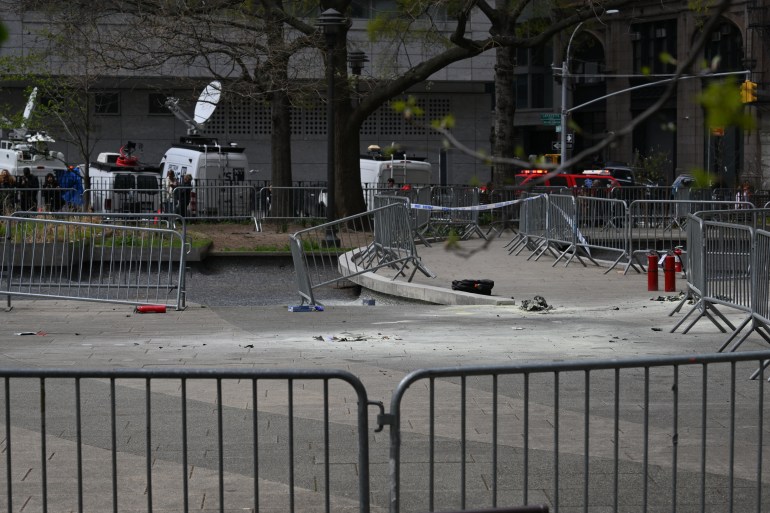” There was a sensation that the international community had surged in, taken over the action and overridden the existing regional system and local methods to determining and attending to needs after catastrophes,” said Luke Ebbs, the Vanuatu director for Save the Children.After Harold, many of those same logistics were coordinated by the Vanuatu Skills Partnership, a regional group that in typical times performs employment and technical training in remote areas in four of the islands 6 provinces.Aid supplies were still sent into Vanuatu from abroad, as they had been before the pandemic. He said it was a prime example of “excellent, in your area led results that resulted from the fact that we had to alter the way we worked and rely more on local capacity than a worldwide rise.” In Fiji, delays were partly the outcome of local nonprofits taking on far more work than they might deal with, stated Tukatara Tangi, the senior humanitarian adviser for the Australia workplace of Plan International.” We call it localization: You attempt to empower locals to take charge and to lead,” Tangi stated.” U.N. agencies have actually included to their existing personnel of 26 people by making a number of new regional hires, Samarasinha stated.
In a time of both false information and too much information, quality journalism is more crucial than ever.By subscribing, you can assist us get the story.
SUBSCRIBE NOW.
” Its like trying to work under 20 meters of water,” stated Katie Greenwood, one of those specialists.” In the COVID-19 era, foreign governments and aid groups have actually been providing what they say is a “contactless” action to natural disasters in the Pacific.” We must not be parachuting people in as a matter of course any longer,” stated Greenwood, who manages the Pacific for the Red Cross.
Several aid experts stated that the overall reaction to Harold was far more in your area led– and efficient– than an earlier response to Cyclone Pam, a 2015 storm that triggered about $400 million in damages in Vanuatu alone.After Pam, international firms sent thousands of relief employees and technical advisers into Vanuatu.” There was a sensation that the worldwide neighborhood had actually surged in, taken over the response and overridden the existing local system and local techniques to recognizing and dealing with requirements after catastrophes,” stated Luke Ebbs, the Vanuatu director for Save the Children.After Harold, numerous of those same logistics were coordinated by the Vanuatu Skills Partnership, a local group that in regular times conducts technical and occupation training in remote areas in four of the islands six provinces.Aid products were still sent out into Vanuatu from abroad, as they had actually been before the pandemic.
An image offered by the Australian Defence Force reveals an Australian Army helicopter flying over Atata Island, Tonga, on Feb. 3.|DAVID COX/ AUSTRALIAN DEFENCE FORCE VIA THE NEW YORK TIMES
Vanuatus Education Ministry also told Save the Children that instead of sending out camping tents to be utilized as replacement class in locations where school buildings had actually been damaged– a normal pre-COVID-19 reaction– the group needs to assist pay for those structures to be repaired.As an outcome, Save the Children used the cash that it would have invested in about 50 tents to finance repairs on more than 100 schools, Ebbs stated. He said it was a prime example of “good, in your area led outcomes that arised from the truth that we had to alter the way we worked and rely more on local capacity than an international surge.” Pitfalls of localization.
Relocating to a more locally led model in the middle of the pandemic has had lots of hiccups.Even as Save the Children worked with Vanuatus Education Ministry to fix schools after Harold, for instance, it shipped momentary tents to other locations. Regional neighborhoods hated them, grumbling that they were too hot on warm days, according to Shirley Abraham, a senior nonprofit leader in Vanuatu.” If you had actually spoken with them and spoken with them, you perhaps wouldnt have actually invested in those tents,” stated Abraham, who performed an independent evaluation of that tent-distribution job by Save the Children and UNICEF.In other cases, COVID-19 travel limitations have avoided foreign specialists from providing in-person technical assistance, leading to delays in aid shipments in locations affected by tropical storms. In Palau and Fiji, for example, a lack of on-the-ground assistance slowed the circulation of money handouts.” You can do it, we did it, great,” Greenwood stated. “But it took a lot longer to get money to individuals who needed it.” In Fiji, hold-ups were partly the result of regional nonprofits handling even more work than they could handle, stated Tukatara Tangi, the senior humanitarian consultant for the Australia office of Plan International. Numerous local team member had actually been personally impacted by disasters they were responding to in a professional capability.” We call it localization: You try to empower locals to take charge and to lead,” Tangi said. “But its fraught with many various issues, bad and great. Some of the bad things are that sometimes individuals can simply get overwhelmed through no fault of their own.” Unchartered area.
Sanaka Samarasinha, the U.N. humanitarian coordinator for much of the South Pacific, stated Thursday that some components of the tsunami reaction in Tonga show the wider shift towards aid “localization.” U.N. agencies have actually added to their existing personnel of 26 individuals by making a number of new local hires, Samarasinha stated. And Tongas disaster-management authorities are coordinating their relief effort with counterparts in Fiji– an intra-Pacific cooperation that would have been not likely before the coronavirus pandemic.Still, Tonga is a little country with a scarcity of technical experts, Samarasinha stated.
PICTURE GALLERY (CLICK TO ENLARGE).
Source link.















